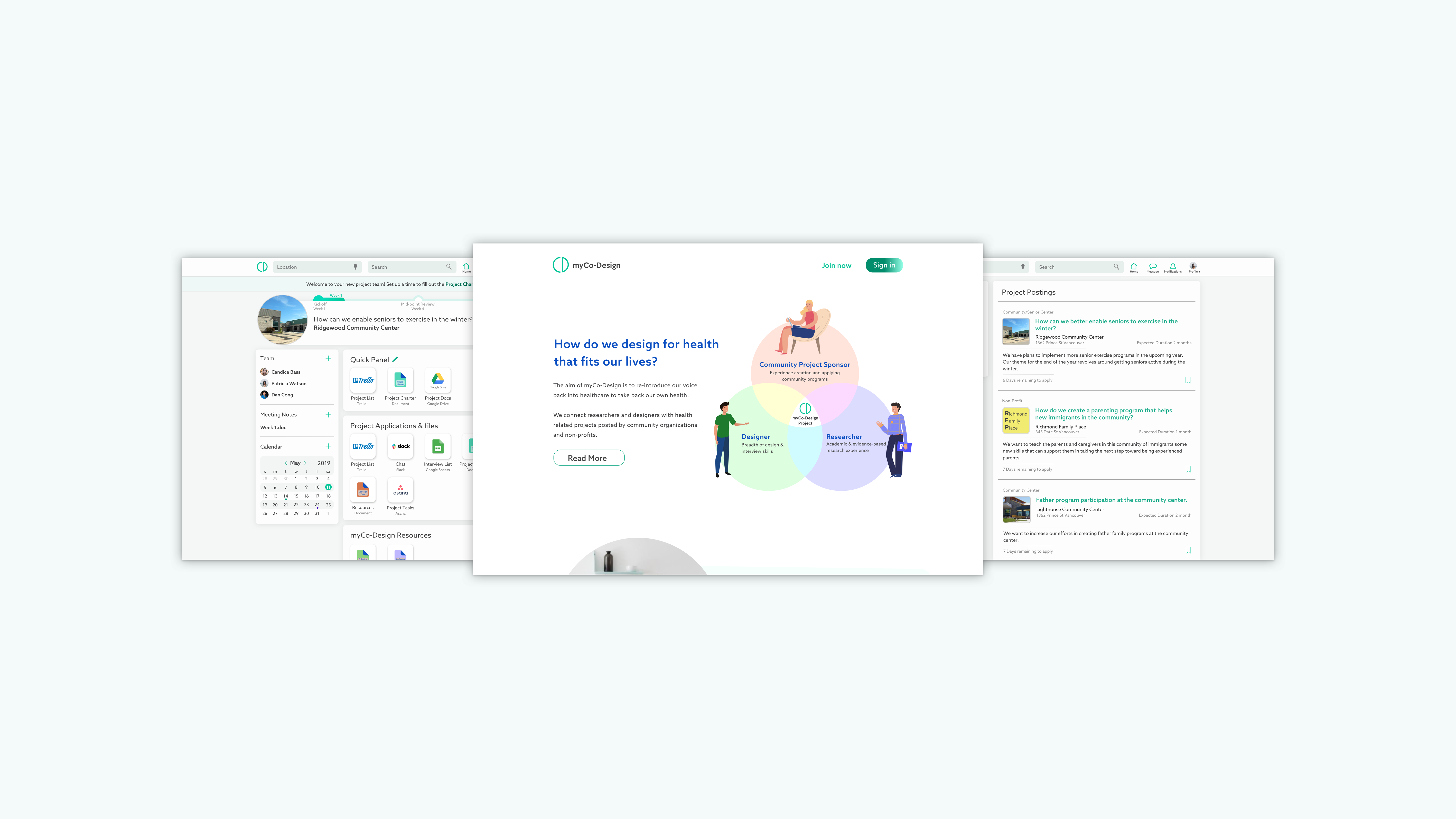
This personal project was completed in 3 weeks early Fall of 2019.
Melissa Wan, MD Candidate
Victor Ng
Figma, Sketch,
Invision,
Principle
Project Lead, Product Designer, User Reseacher
Lead concept definition, ideation, user research and design.
This project was inspired by Melissa’s work in developing co-designed evidence-based public health interventions. She saw that there was a need for community based initiatives and a major implementation barrier was the lack of connection between communities, designers, and researchers.
A partnership was formed to explore this topic.
More emphasis has been placed on the creation of community based initiatives for the health of the population. However, there are limited projects doing this.
Currently, work in creating community-based interventions is siloed. There are many instances where researchers and designers work separately, towards the same cause, with limited communication and sharing of resources. The current projects that exist using co-design principles are government funded and occur over long periods of time, however not all communities have access to these resources.
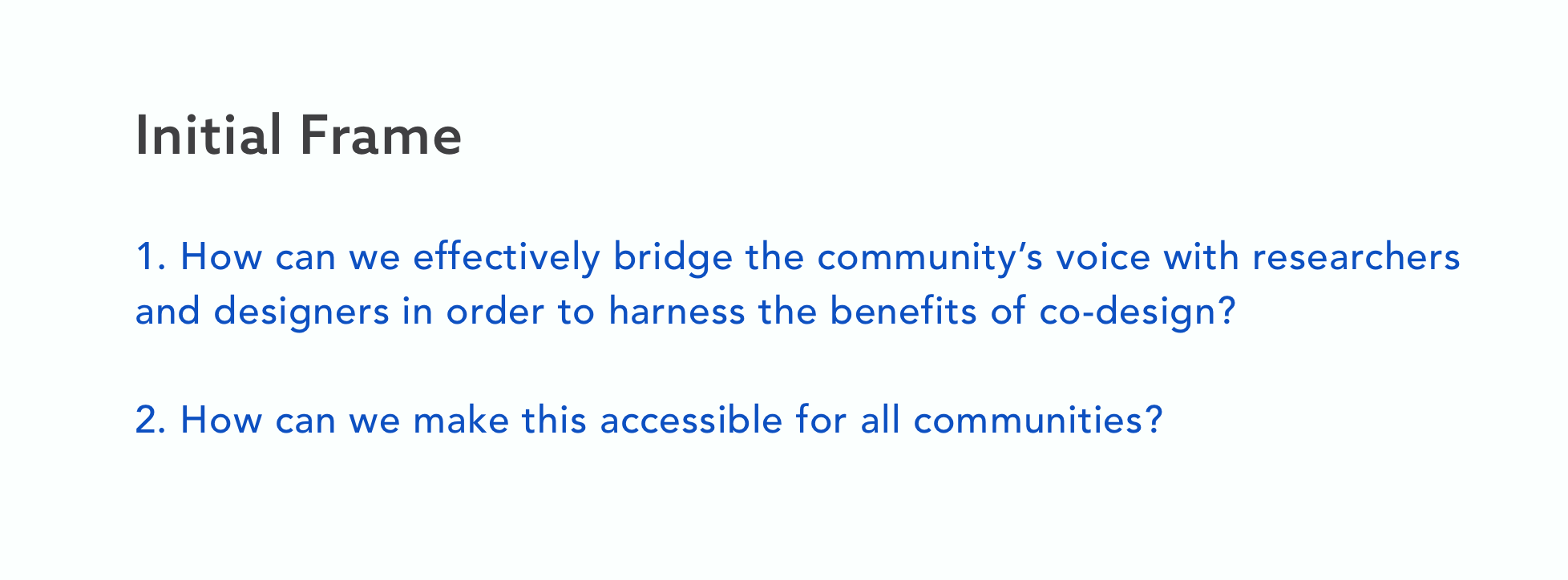
Co-design (or participatory design) is an approach that emphasizes on the involving stakeholders to the design process to ensure the solution meets their needs.
Co-design has recently begun to gain traction in healthcare with the move towards patient-centered care. This involves adding external researchers and designers to their creation process.

We decided to create, myCo-Design,
a web application that connects communities (ex. Non-profits, Community Centers, Clinics, and even rural cities) to designers and researchers to explore a co-design project together.
myCoDesign allows the community sponsor to post project prompts for designers and researchers to apply to.
During the project, the web app is used as a collaboration portal to enable the project team to realize their goals and ultimately impact their community.
Health related projects are rigourous in their research. We started with a literature scan to see the benefits of co-design in improving health outcomes.
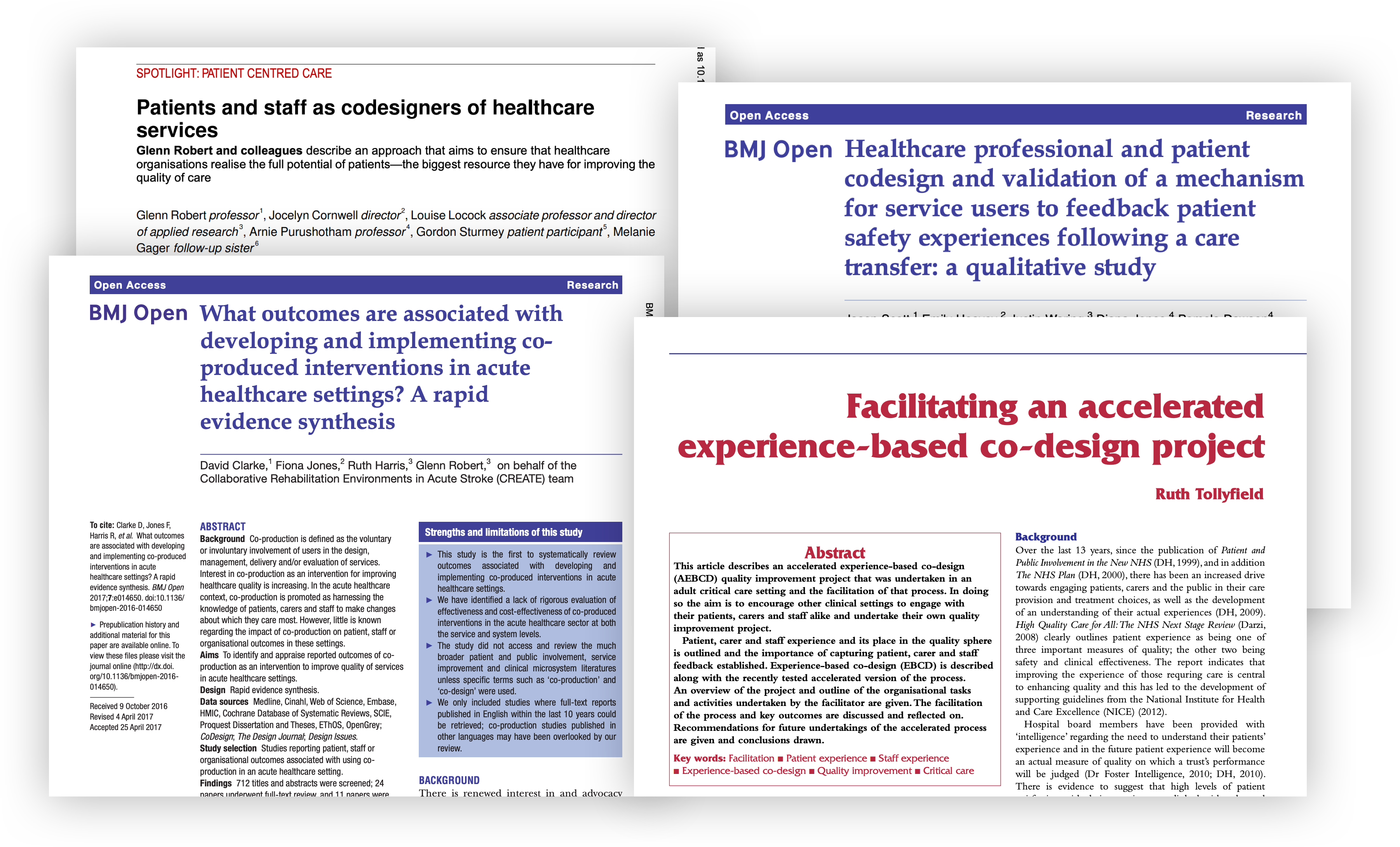
Our findings were mostly related to acute care settings, for example in hospitals and clinics. Though there were consistent outcomes related to (a) the value of patient and staff involvement in co-design processes; (b) the generation of ideas for changes to processes, practices and clinical environments; and (c) tangible service changes and impacts on patient experiences. Source: Open bmj
We found that co-design has generally only been implemented in acute care settings, for example in hospitals. There is a lack of co-design for community based initiatives altogether.
Being skeptical of only seeing positive successes of co-design, we decided to test the status quo. A peer-review journal states that projects often do not correctly measure the outcomes. Moreover, as more health organizations are adopting co-design a rigorous evaluation of the outcome is needed.
There was not a lot of research on measuring the outcomes of a project. We agreed that it was important for us to design something that enable projects to be more results-oriented.
Once we had a basis of knowledge about the area we were designing for, I began conducting user research to uncover the typical motivations and goals of each party in their project work process. I formed a few questions to guide us through the user research process:
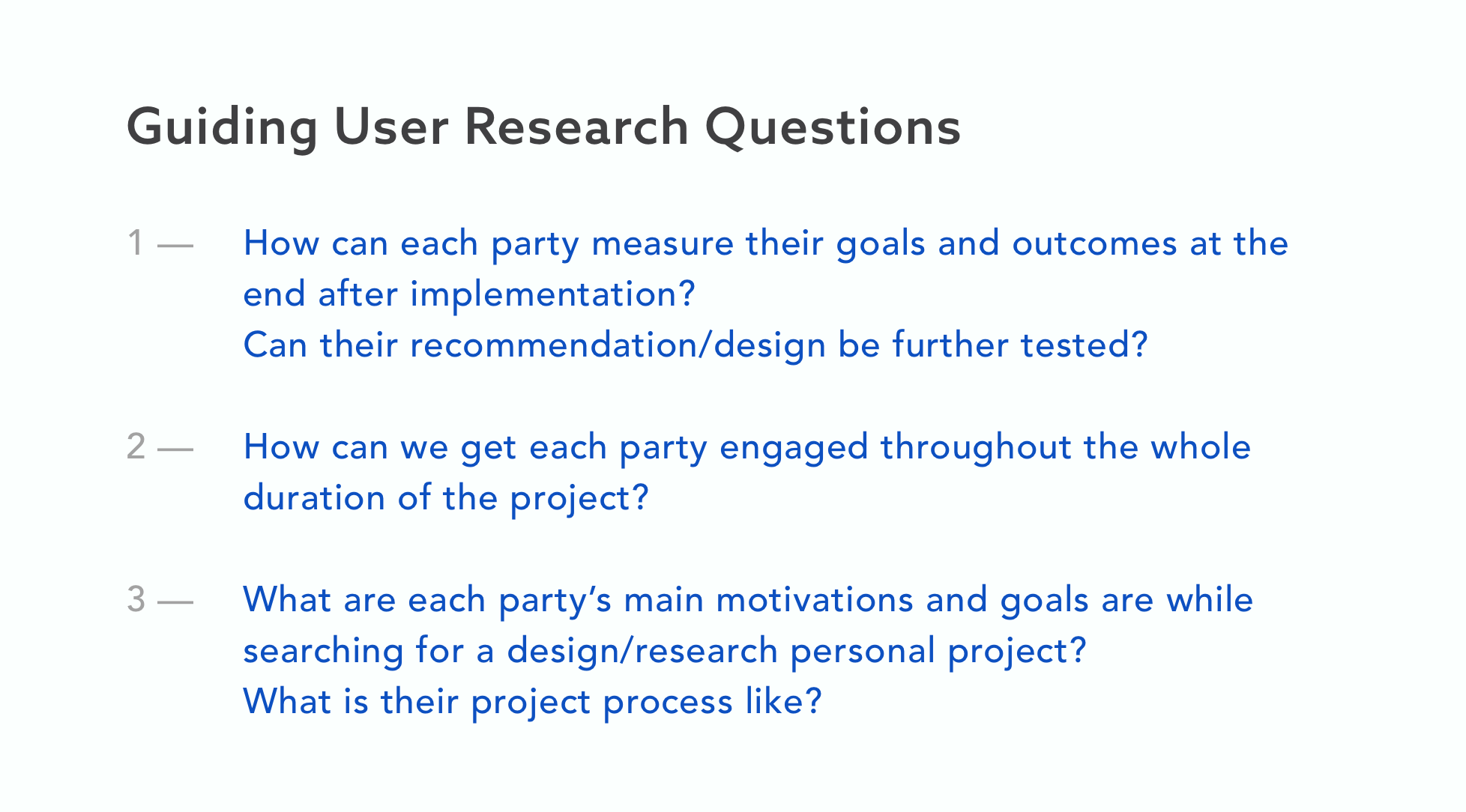
After making guiding user research questions, I conducted user research through interviews and surveys. I started with an interview at a local non-profit that focuses on supporting families, seniors, caregivers and children to gain a deep understanding of the program creation process/model, grant funding process and normal day to day operations.
Insights from the community interviews were used to create two online surveys posted on Reddit and Facebook. One survey was targeted designers and the other targeted researchers. These surveys were posted on design related subreddits and science & academic subreddits/groups respectively to our targeted groups.

I then gathered and formulated insights from our user research regarding each group:
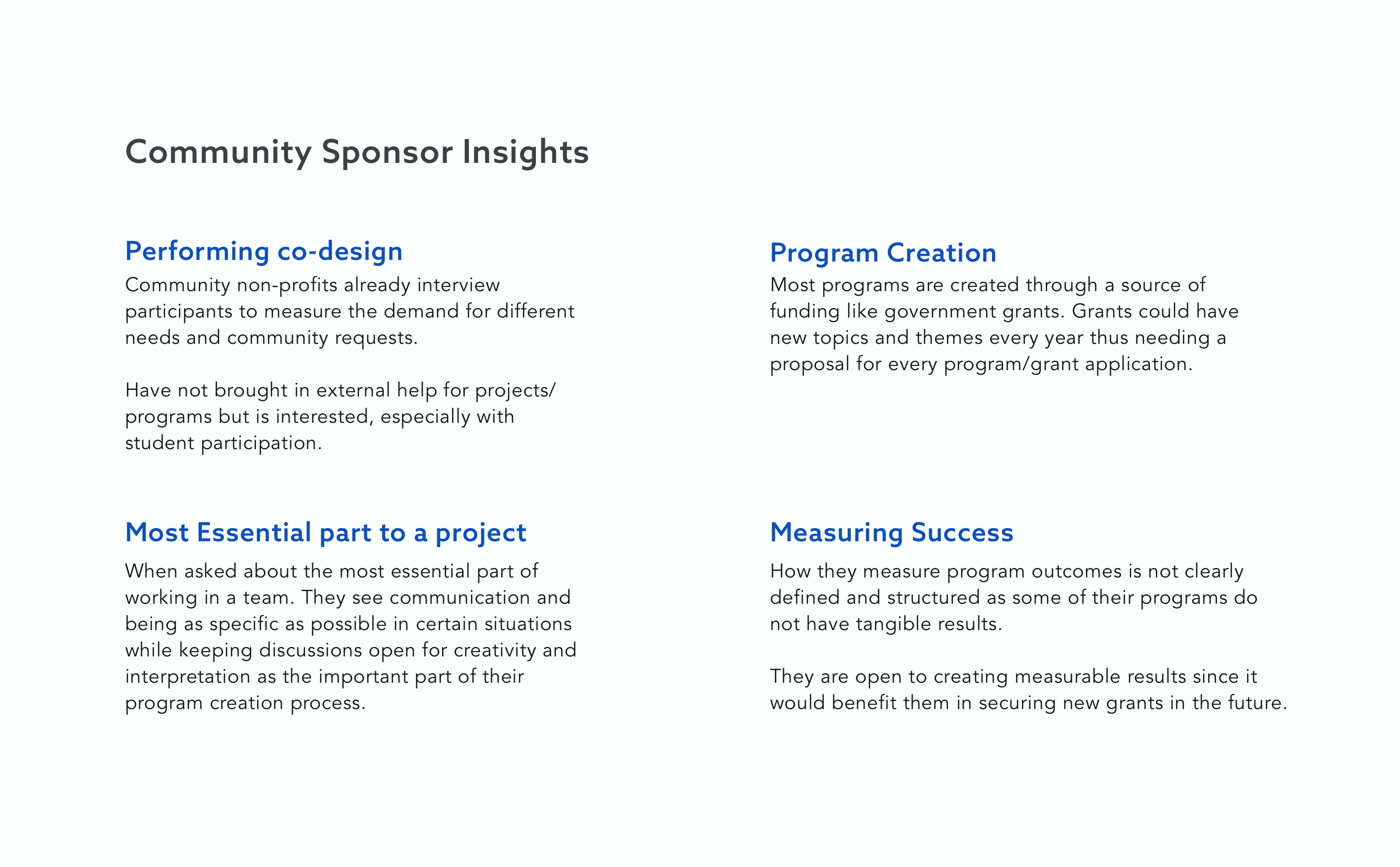
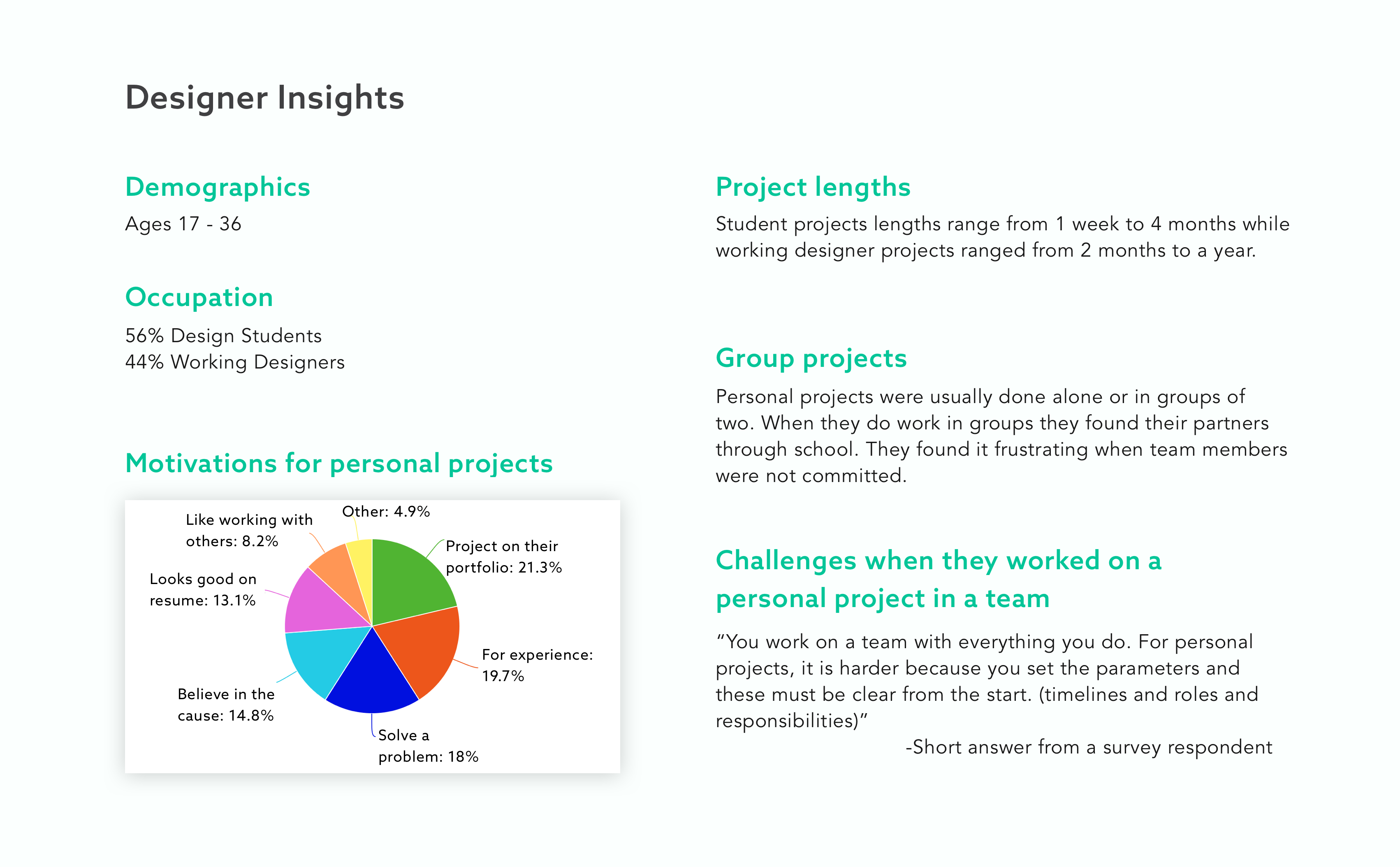
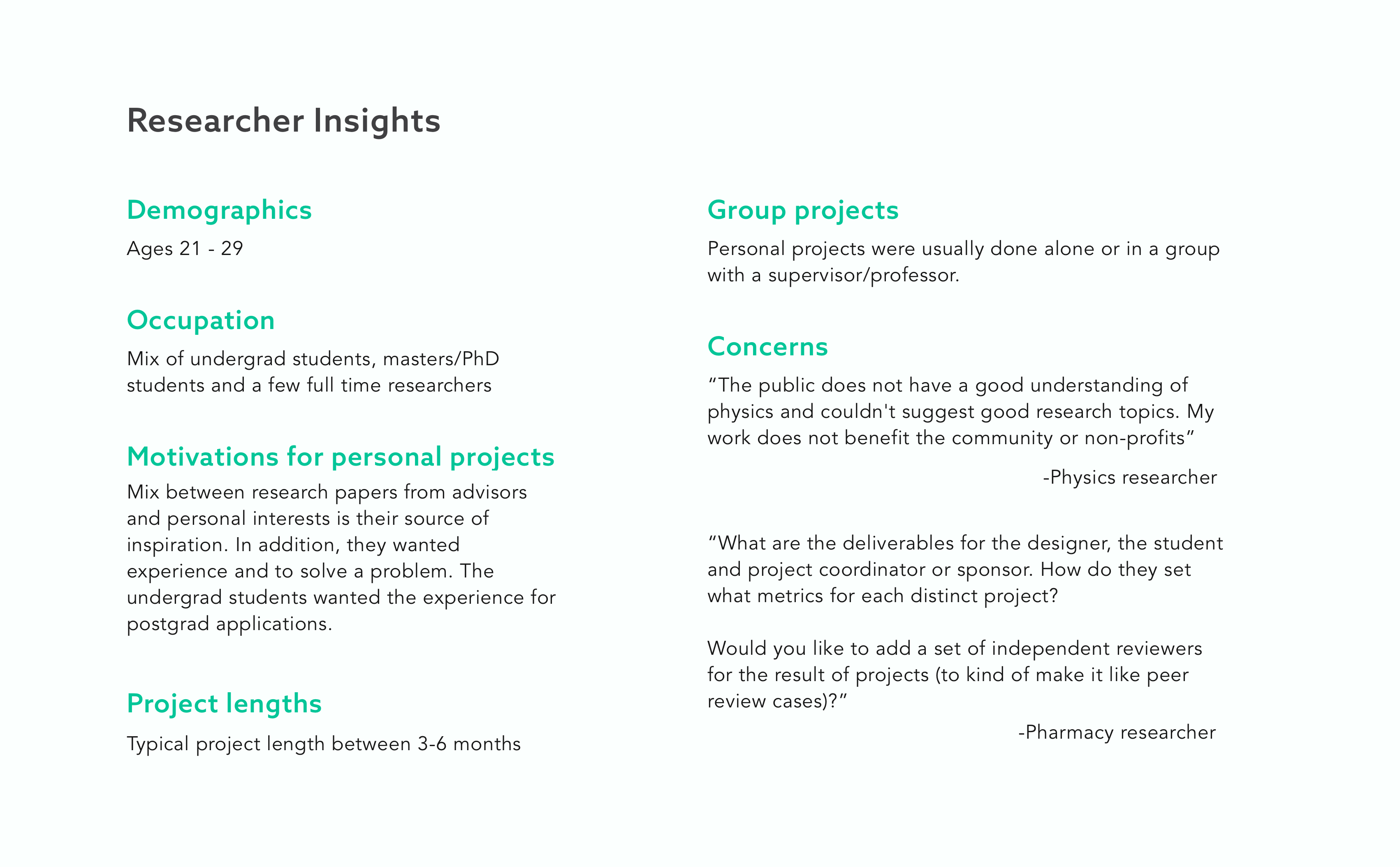
Through brainstorming after looking at our insights from our user research, creating an online platform emerged as a clear choice to achieve our goals to facilitate connection of communities to researchers and designers. Through an online platform, communities that are more rural or receive less funding could have equal access. The unique aspect of this platform is that it will emphasize and place the communities goals first.
We named the application myCo-Design as we wanted the team to take ownership of their own co-design project.
In addition, our survey led us to targeting this platform to connect communities with students. Overall, we found that the research and design student population is a valuable resource that is largely underutilized. Understanding that many communities may not have access to resources, students are often motivated to gain experience and contribute to research and personal projects that impact their community. By understanding each parties motivations, myCo-Design can be used to create projects rooted in research and design, while gaining experience for their research/design project. Achieving a win-win-win situation for both the community sponsor, design student, and research student.
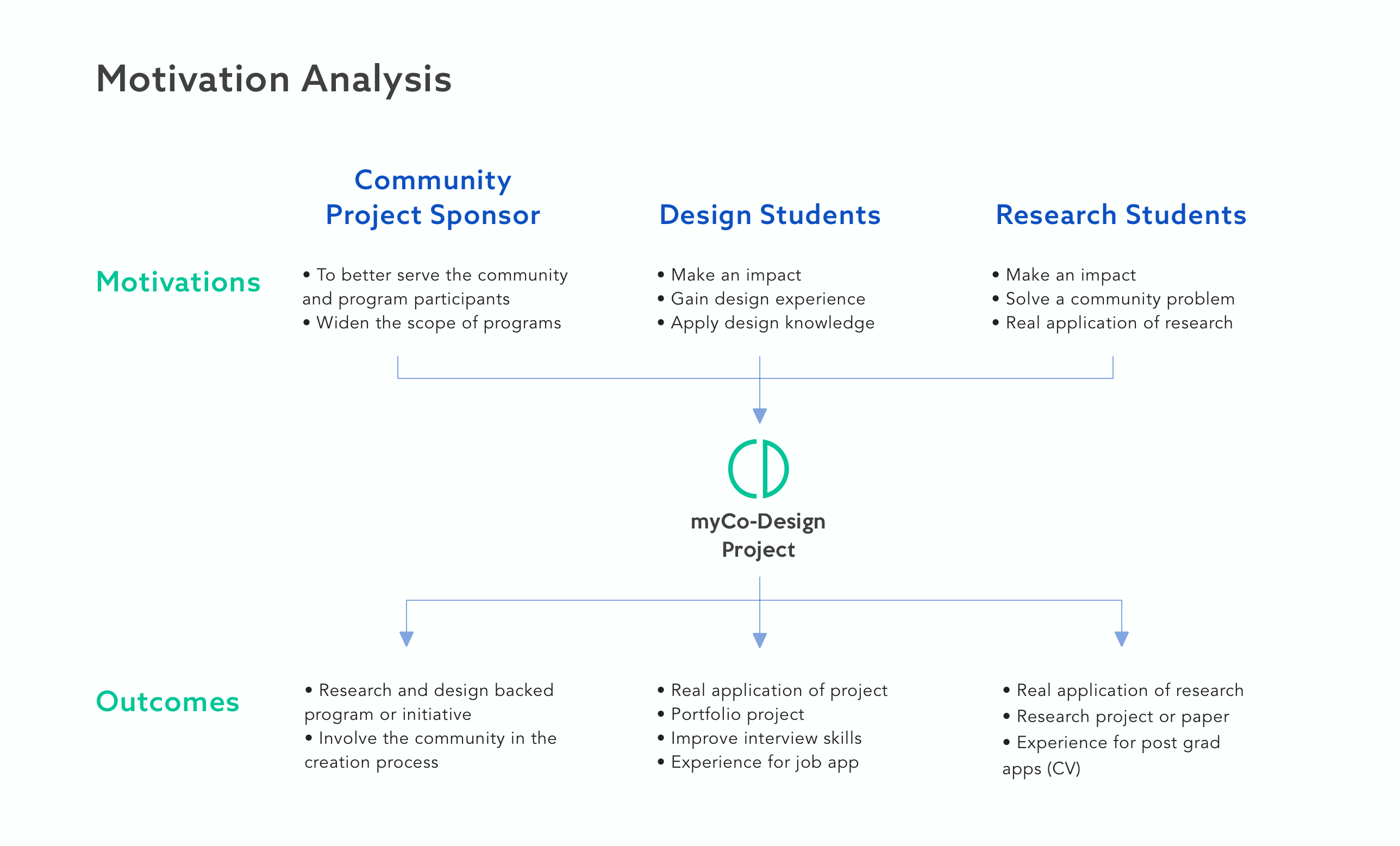
I continued with some design requirements using our user research for our proposed application:

All parties should have access to relevant information on the platform at all times. From signing up to applying to joining a project, users should be able to see relevant information for them to make informed decision in all phases.

Goals should be adequately set, changed and assessed through a formal process in the beginning, middle and the end of the project.

The platform should enable the team for project success. The platform should also provide tools to help facilitate clear communication and collaboration.

Not everyone is fluent with navigating technology. The interface should be simple yet effective in performing its intended goal. We want users to work on what really matters instead of spending time fiddling on the platform.
Knowing our application direction, I started to ideate on a list of data & requirements on the platform. I then made a rough sketch of the application flows and what is required for each step in order to journey map a proposed system.

After our brainstorm, and gaining a deeper understanding of the three parties involved in my system. I created a journey map of an anticipated system with all three parties:
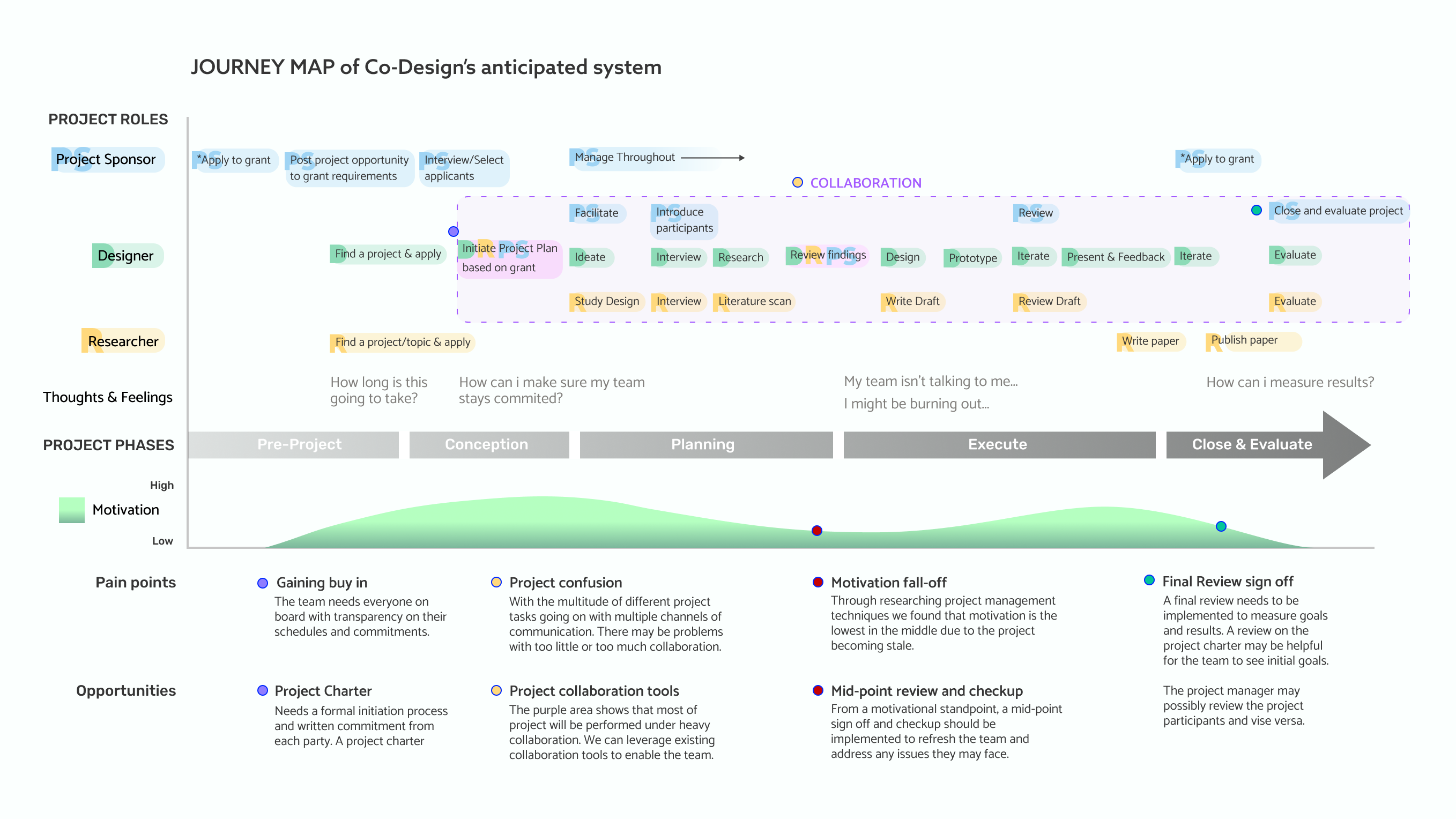
After the ideation session, I decided to group the tasks into of the application into analogous phases for me to design.
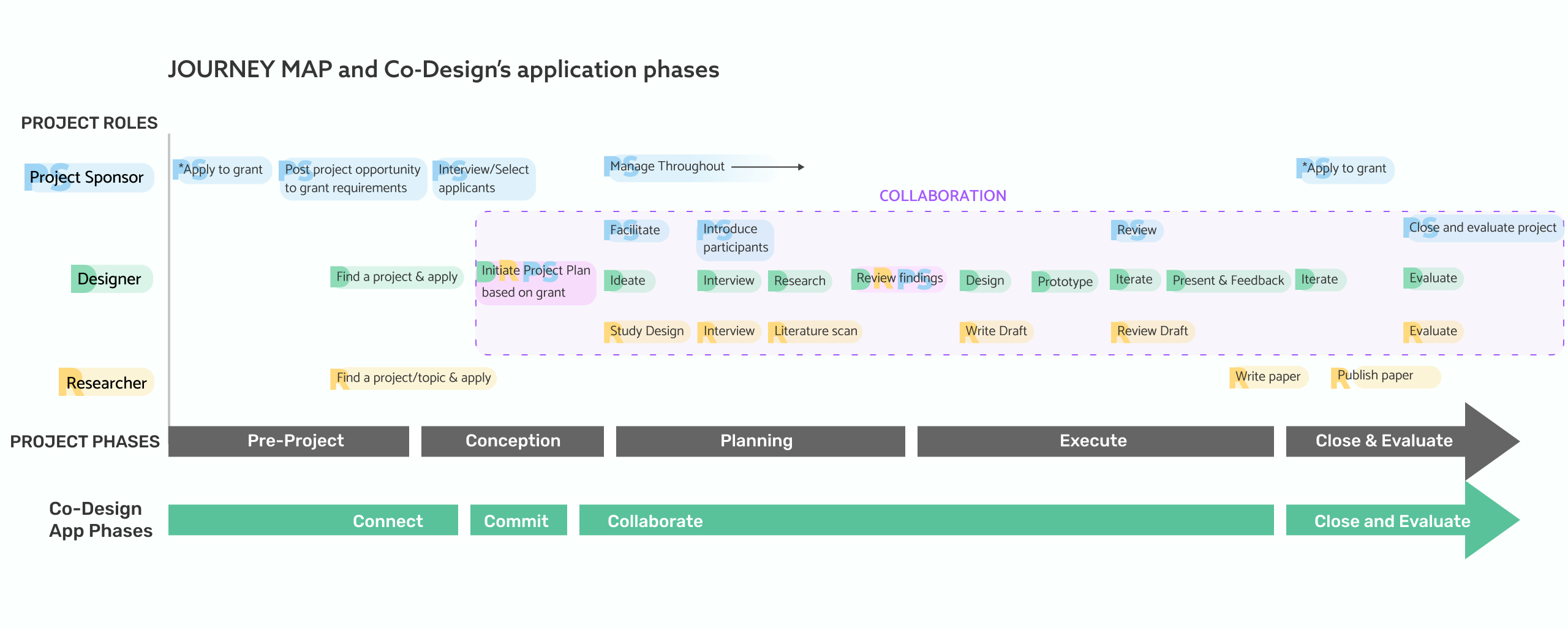
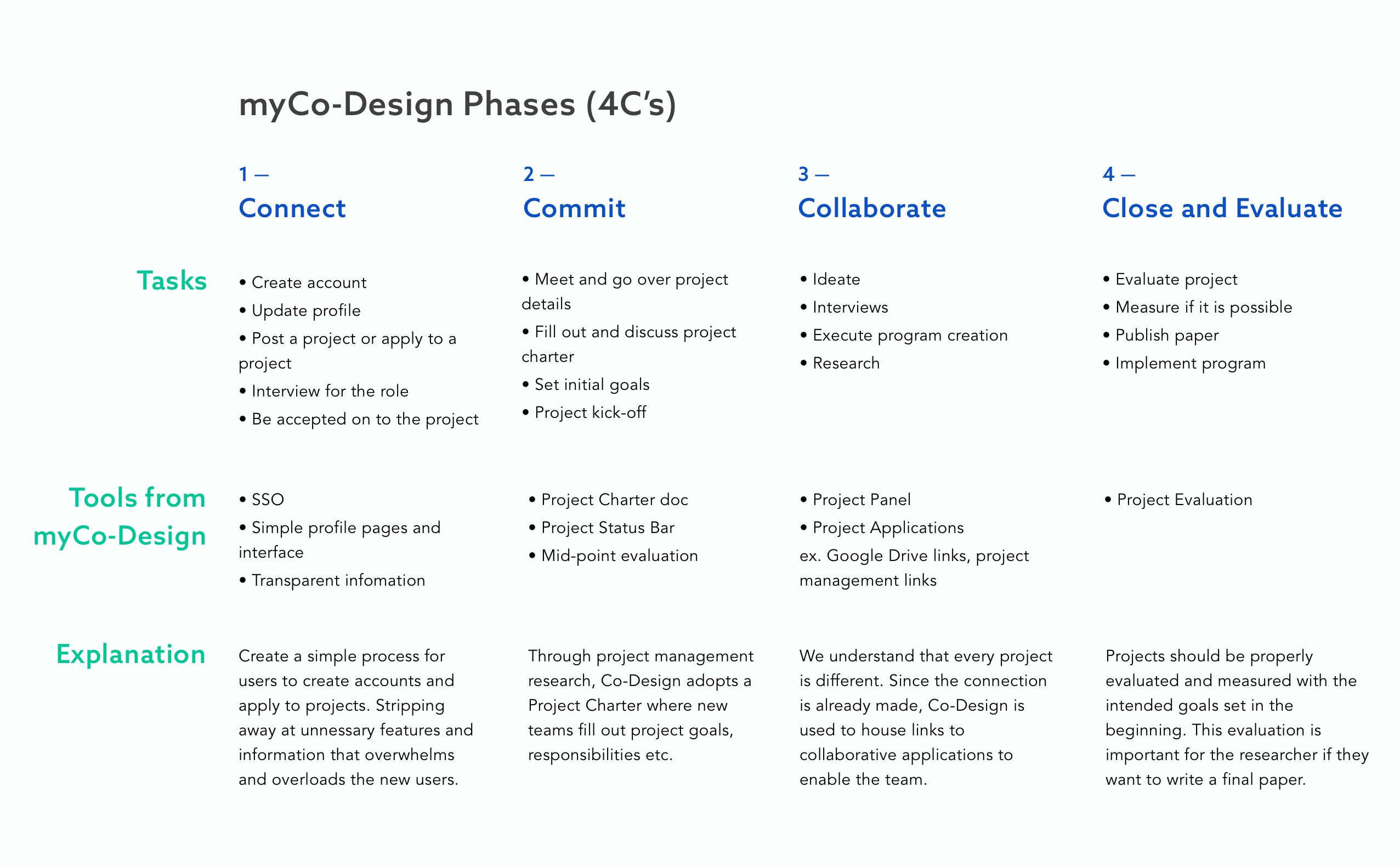
Once I categorized the tasks, I started wireframing the solution beginning with the connection phase. During the whole process, I kept my design requirements in mind.

Staying transparent, the information on the application is as transparent as possible for the users to make informed decisions whether or not they're good with technology. On-boarding messages are also used to guide the team/individual on the application.
Feedback from my greybox wireframes indicated that users do not want to enter every piece of information from their resume onto their profile. I iterated this page to show the users resume on their profile instead. This significantly shortens the workflow from signing up to applying with a fully completed profile and decreases frustrations with the applicants.
In the homepage of the project, myCo-Design acts as a repository for the most important documents and applications of the teams project.
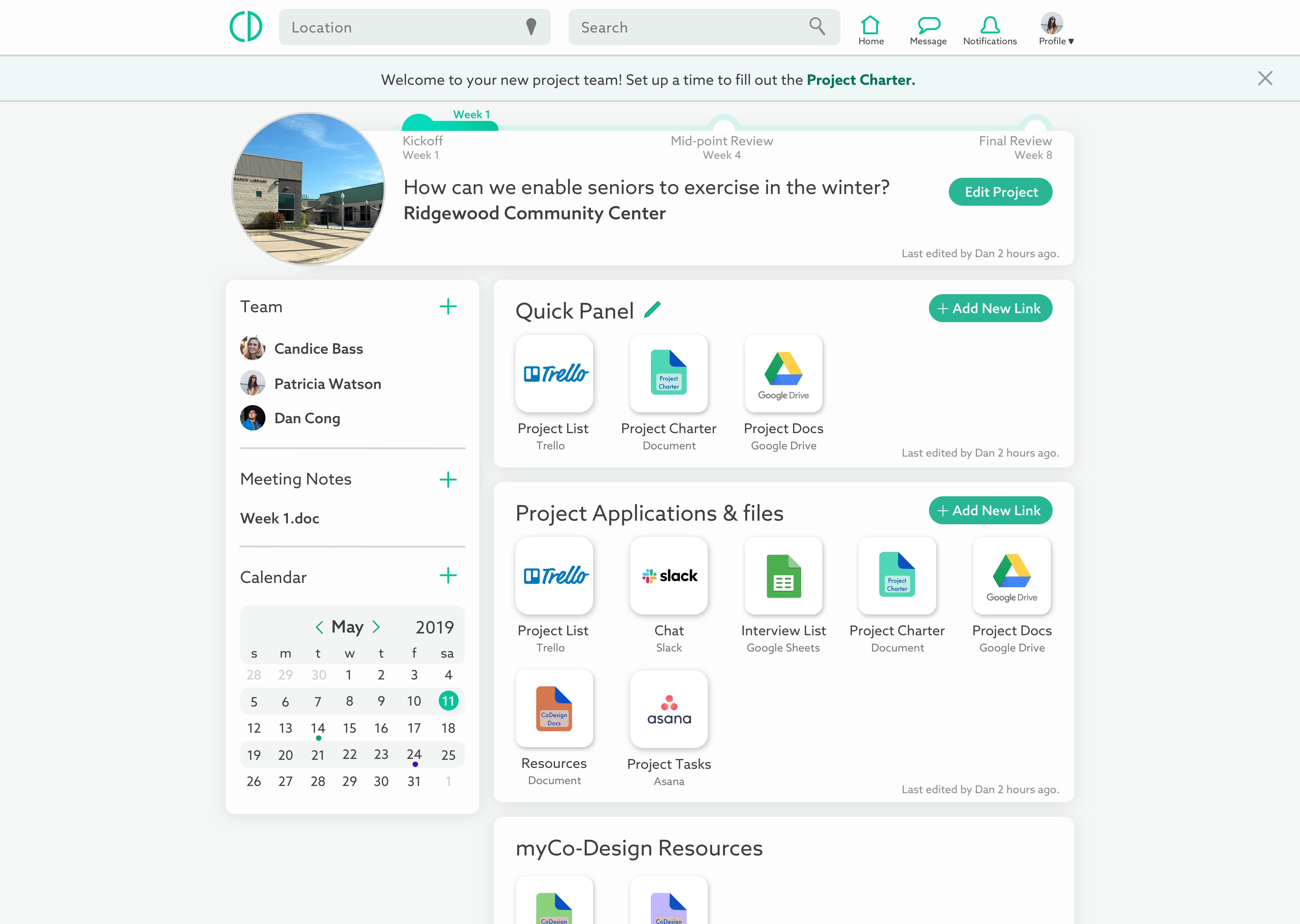
The task bar on top of the project page is placed to bring awareness to the timeline of the project. If the project team wants to adjust the timeline, they do so in the project charter.
Since this was a personal project, there were no deadlines for tasks during my design process. For that reason, I set hard deadlines for myself to make sure everything was done in a timely fashion. It was challenging to perform this many steps in the design process within the three week timeframe. For example, I only had three days to interview each set of users plus survey designers and researchers. Working in urgency was deemed extremely useful as I did not have time to overthink, the show must go on.
As a design student with a business background, I did not have known of the science and research community as well as the non-profit community. Instead, I reached out to my network to ask if they would be interested in speaking with me about their research process. In addition, I interviewed the Director at the non-profit I interned at 5 years ago. Special thanks to Tracy!
Initially, we wanted the product to target specifically healthcare. We decided to pivot and aim at community health instead as the implications and scope of designing for healthcare is not feasible in this timeframe. For example, there are many legal implications while designing for a hospital and the level of expertise from researchers and designers would have to be much higher.